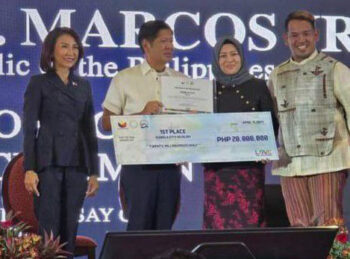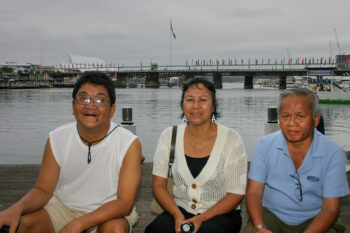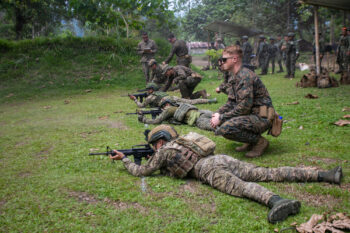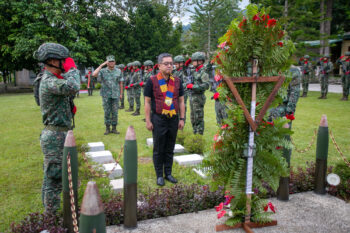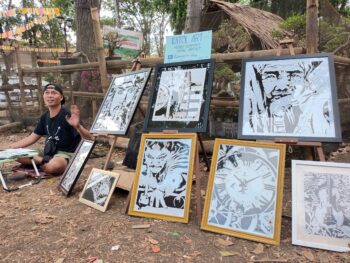MALAYBALAY CITY (MindaNews/09 October) — In our Principles of Economics class, we study why peace is important to the economy. We relate the absence of peace to wasting scarce resources such as land (including all natural resources), labor, and capital – the basic factors of production.
Just like what I shared on Facebook a week ago, conflicts in Mindanao are not conflicts borne out of differences in religion as others would depict it. Many conflicts in Mindanao have been caused by land issues.
Incidentally, when our lectures were about “Peace and Order: Basic Need (in an economy)” and “Economics and Land Reform” the news stories on media depicted the Bangsamoro Basic Law (BBL) as dead. The story of Lumad killings in Surigao also hogged headlines.
So I found it useful to sprinkle our economics discussion with ounces of history.
Once upon a time, Mindanao, just like other islands in what is now the Philippines, was a vast land occupied by its indigenous peoples. Modern historians from Mindanao now point out some aspects that are made vague in history books taught in elementary and high school (and even in college).
In the 1300s, Arab traders brought Islam to the islands, making way for Islamized IPs who thrived largely in southern Mindanao and the islands like Tawi-tawi, Sulu, and Basilan. In the 1500s, the Spaniards came and spread Christianity in the islands. Because many parts of Mindanao had been Islamized, Christianity spread widely in Luzon, the Visayas and in Mindanao, only in the northern and eastern parts, where indigenous peoples had not converted to being Muslims.
I have to mention this to some students who are confused about the conflicts around them. There are those who do not have any idea what the BBL is trying to address and who care less if it is “dead” in Congress.
I remember Prof. Rudy “Ompong” Rodil, whose many lectures I have had the opportunity to listen to. He showed how Manila-centered and colonial-backed Philippine governments imposed policies that marinated the viand of conflict in Mindanao.
Ompong, who was in Bukidnon State University in 2008 to explain about the Memorandum of Agreement on Ancestral Domain (MOA-AD), showed how policies like Public Land Act 926, passed on October 7, 1903 and Public Land Act of 1919 displaced both Islamized and non-Islamized indigenous peoples from their ancestral domains.
The first law declared all unregistered land tracts as public domain and open for homestead and the second appropriated a maximum of 10 hectares in homestead lots for “Muslim Filipinos” and “wild tribes”, and 24 hectares for “non-Muslim Filipinos”. “Non-Muslim Filipinos” included migrants from Luzon and the Visayas but not indigenous peoples.
Here is a profile of the “resettlement policy” in the country by then:
In 1903, the public land law dictated that a homesteader from Luzon and the Visayas may own 16 hectares of land. There was no provision for “Moros and the wild tribes”. On the other hand, corporations, like pineapple plantations were allowed 1,024 hectares.
In 1919, there was already a provision of 10 hectares for “Moros and wild tribes”. But the allotment for homesteaders was also increased from 16 hectares to 24 hectares. Corporations remained high and mighty at 1,024 hectares (remember this was the American period and the pineapple plantations were owned by Americans.)
In 1936, the provision for homesteaders was reduced back to the original 16 hectares. Likewise, provision for “Moros and Wild Tribes” was reduced to four hectares. In economics parlance, the allotment for corporations “was held constant” or ceteris paribus. Policies like these cause major turbulence in the peace situation.
Some historians refer to the policy of sponsoring the migration to Mindanao of landless families from Luzon and the Visayas as formula for conflict.
The settlers came with official titles to parcels of land. Conflict erupted almost immediately between settlers who claimed their new legal rights and Islamized and non-Islamized indigenous peoples who resisted such “legal rights”. The former were keen on titles as proof of “ownership”. The latter considered their long-time occupation and stewardship of land from their ancestors as their proof.
“So now, what?” one student asked. “Are we going to send back the settlers to where they came from?” I directed the question to the class. Half of them came from settler ancestors, the other half, Lumad of Bukidnon. The answer was either “no need” or “we don’t agree.”
Most people who have studied Mindanao history, including its conflicts, may find this information outdated and probably, an old issue that is being recycled.
But for the youth, including my students in the university, this could mean a lot, this could change a lot.
Peace is a basic need. In fact, it is a major factor of production. Even if business has land, labor and capital, there can never be sustained productivity if there is no peace. No economy grows “well” if peace remains elusive.
In class, we agreed that the preferred course of action is to be able to understand history, accept these circumstances as reality, and live and aspire for a Mindanao based on these realities.
This reality requires that we can talk about how we can co-exist and move on.
(MindaNews contributor Walter I. Balane teaches journalism and economics and manages the university radio station of Bukidnon State University.)

